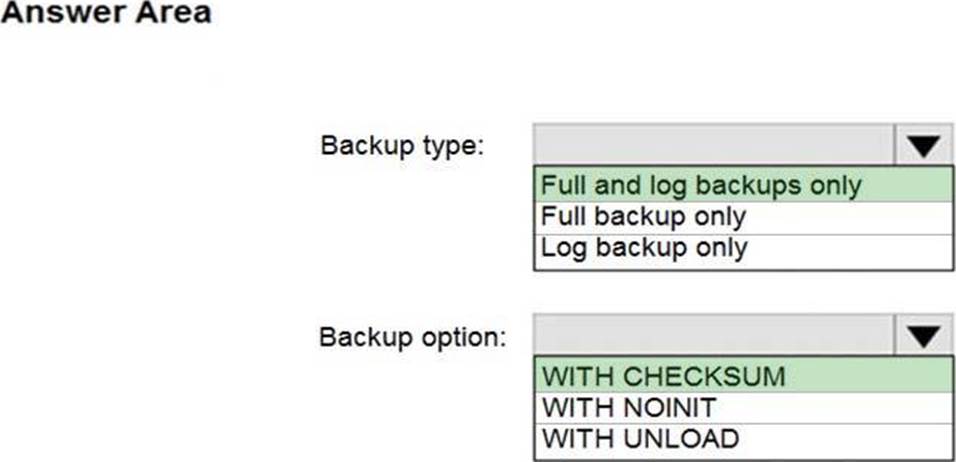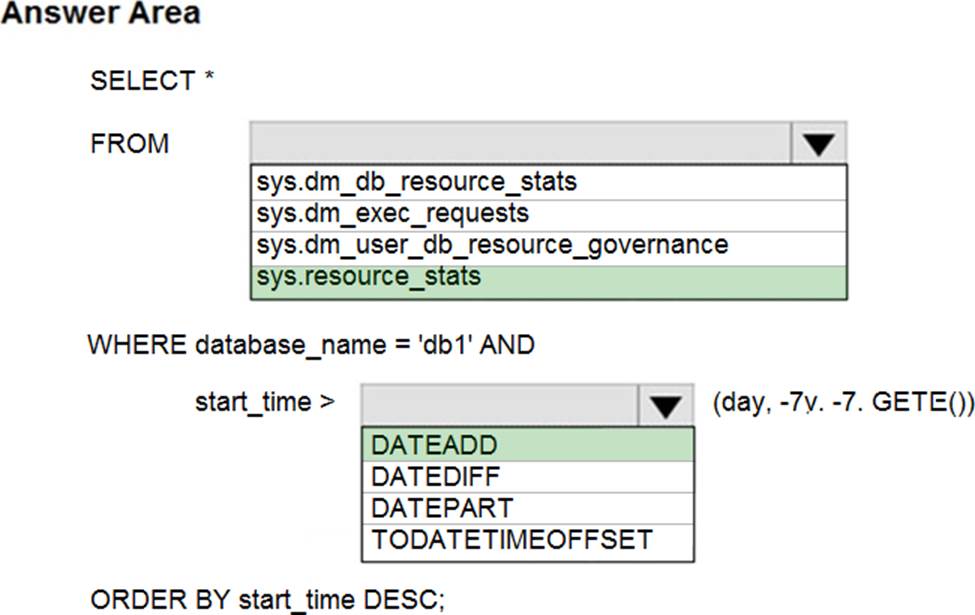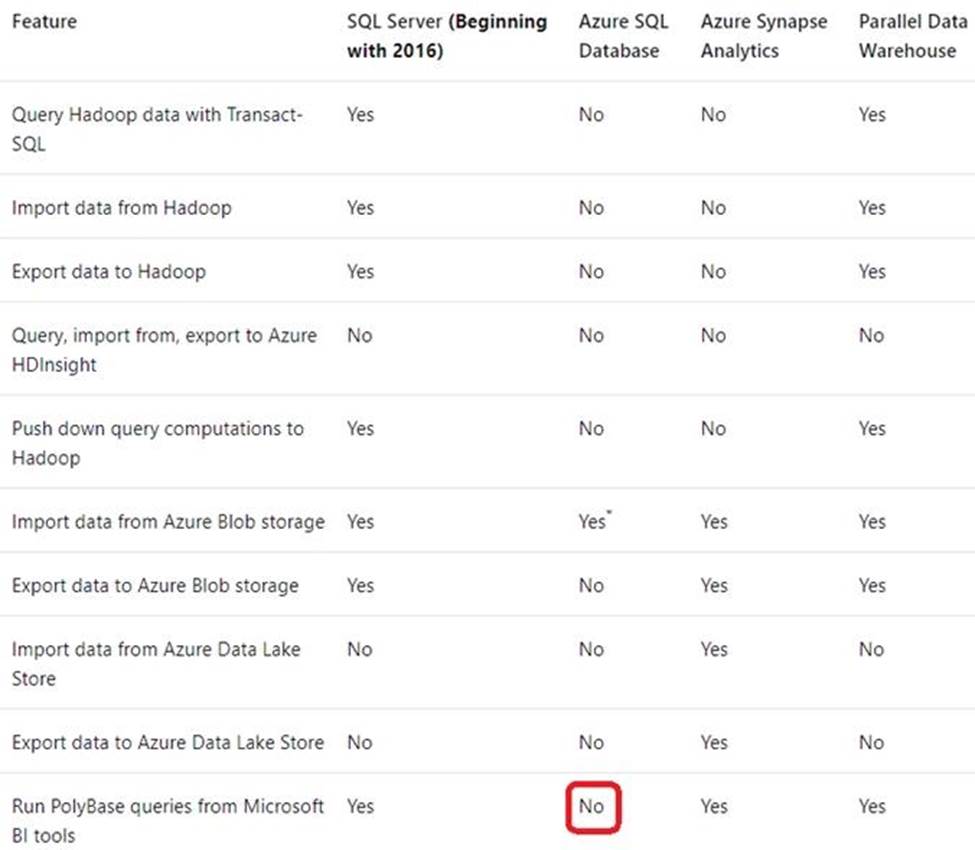Microsoft DP-300 Real Exam Questions
The questions for DP-300 were last updated at Apr 15,2025.
- Exam Code: DP-300
- Exam Name: Administering Microsoft Azure SQL Solutions
- Certification Provider: Microsoft
- Latest update: Apr 15,2025
HOTSPOT
You have an on-premises Microsoft SQL Server 2016 server named Server1 that contains a database named DB1.
You need to perform an online migration of DB1 to an Azure SQL Database managed instance by using Azure Database Migration Service.
How should you configure the backup of DB1? To answer, select the appropriate options in the answer area. NOTE: Each correct selection is worth one point.
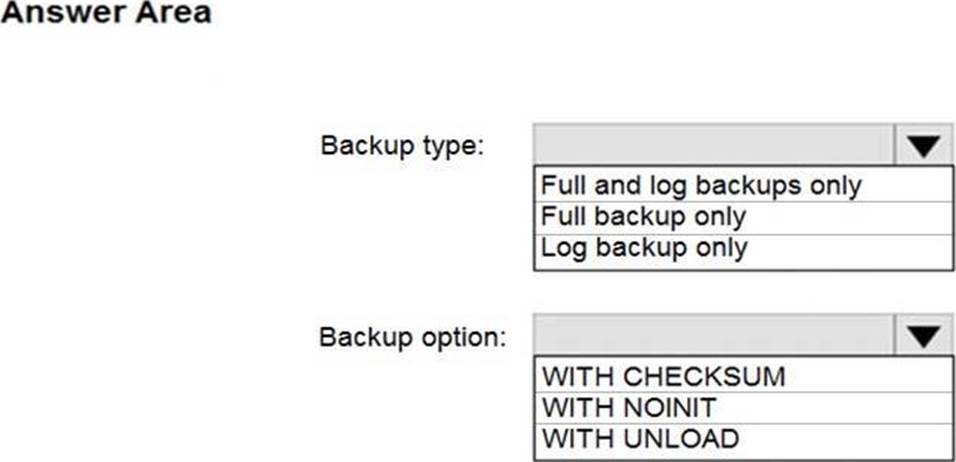
You need to identify the cause of the performance issues on SalesSQLDb1.
Which two dynamic management views should you use? Each correct answer presents part of the solution. NOTE: Each correct selection is worth one point.
- A . sys.dm_pdw_nodes_tran_locks
- B . sys.dm_exec_compute_node_errors
- C . sys.dm_exec_requests
- D . sys.dm_cdc_errors
- E . sys.dm_pdw_nodes_os_wait_stats
- F . sys.dm_tran_locks
HOTSPOT
You have an Azure SQL database named db1.
You need to retrieve the resource usage of db1 from the last week.
How should you complete the statement? To answer, select the appropriate options in the answer area. NOTE: Each correct selection is worth one point.
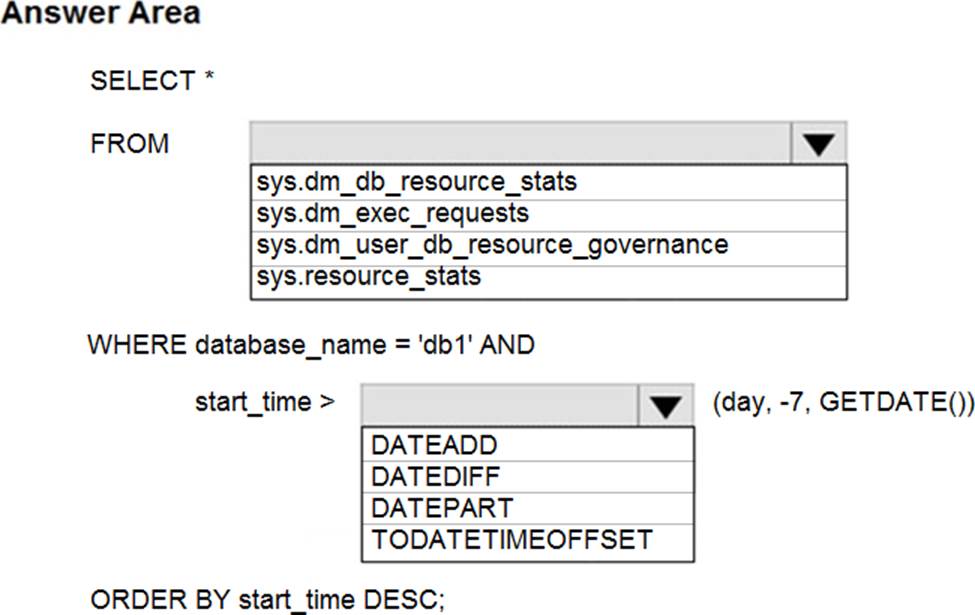
You deploy a database to an Azure SQL Database managed instance.
You need to prevent read queries from blocking queries that are trying to write to the database.
Which database option should set?
- A . PARAMETERIZATION to FORCED
- B . PARAMETERIZATION to SIMPLE
- C . Delayed Durability to Forced
- D . READ_COMMITTED_SNAPSHOT to ON
You deploy a database to an Azure SQL Database managed instance.
You need to prevent read queries from blocking queries that are trying to write to the database.
Which database option should set?
- A . PARAMETERIZATION to FORCED
- B . PARAMETERIZATION to SIMPLE
- C . Delayed Durability to Forced
- D . READ_COMMITTED_SNAPSHOT to ON
You have 40 Azure SQL databases, each for a different customer. All the databases reside on the same Azure SQL Database server.
You need to ensure that each customer can only connect to and access their respective database.
Which two actions should you perform? Each correct answer presents part of the solution. NOTE: Each correct selection is worth one point.
- A . Implement row-level security (RLS).
- B . Create users in each database.
- C . Configure the database firewall.
- D . Configure the server firewall.
- E . Create logins in the master database.
- F . Implement Always Encrypted.
You have 50 Azure SQL databases.
You need to notify the database owner when the database settings, such as the database size and pricing tier, are modified in Azure.
What should you do?
- A . Create a diagnostic setting for the activity log that has the Security log enabled.
- B . For the database, create a diagnostic setting that has the InstanceAndAppAdvanced metric enabled.
- C . Create an alert rule that uses a Metric signal type.
- D . Create an alert rule that uses an Activity Log signal type.
You have an Always On availability group deployed to Azure virtual machines. The availability group contains a database named DB1 and has two nodes named SQL1 and SQL2. SQL1 is the primary replica.
You need to initiate a full backup of DB1 on SQL2.
Which statement should you run?
- A . BACKUP DATABASE DB1 TO URL=’https://mystorageaccount.blob.core.windows.net/ mycontainer/DB1.bak’ with (Differential, STATS=5, COMPRESSION);
- B . BACKUP DATABASE DB1 TO URL=’https://mystorageaccount.blob.core.windows.net/ mycontainer/DB1.bak’ with (COPY_ONLY, STATS=5, COMPRESSION);
- C . BACKUP DATABASE DB1 TO URL=’https://mystorageaccount.blob.core.windows.net/ mycontainer/DB1.bak’ with (File_Snapshot, STATS=5, COMPRESSION);
- D . BACKUP DATABASE DB1 TO URL=’https://mystorageaccount.blob.core.windows.net/ mycontainer/DB1.bak’ with (NoInit, STATS=5, COMPRESSION);
What should you implement to meet the disaster recovery requirements for the PaaS solution?
- A . Availability Zones
- B . failover groups
- C . Always On availability groups
- D . geo-replication
You have a Microsoft SQL Server 2019 database named DB1 that uses the following database-level and instance-level features.
✑ Clustered columnstore indexes
✑ Automatic tuning
✑ Change tracking
✑ PolyBase
You plan to migrate DB1 to an Azure SQL database.
What feature should be removed or replaced before DB1 can be migrated?
- A . Clustered columnstore indexes
- B . PolyBase
- C . Change tracking
- D . Automatic tuning

